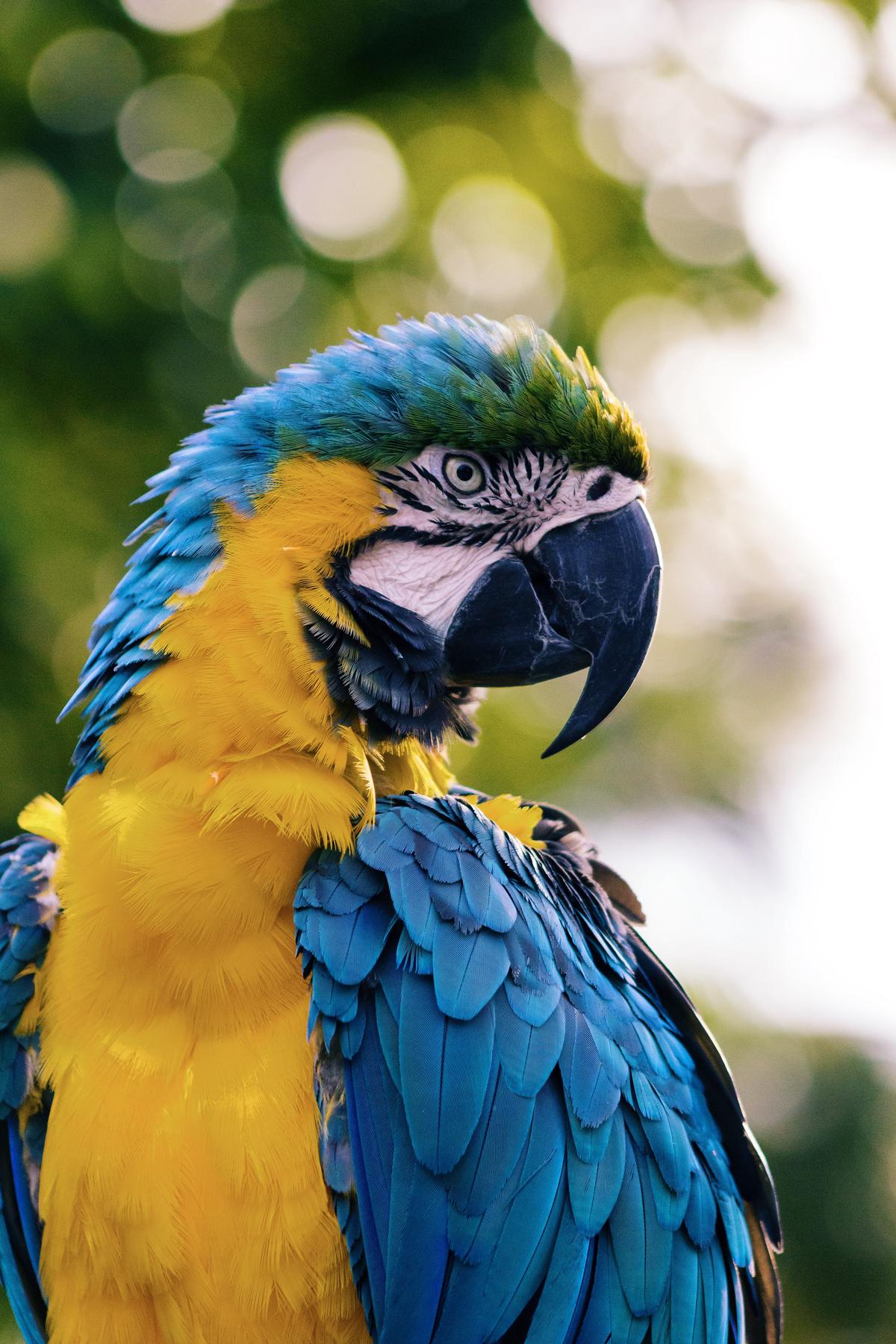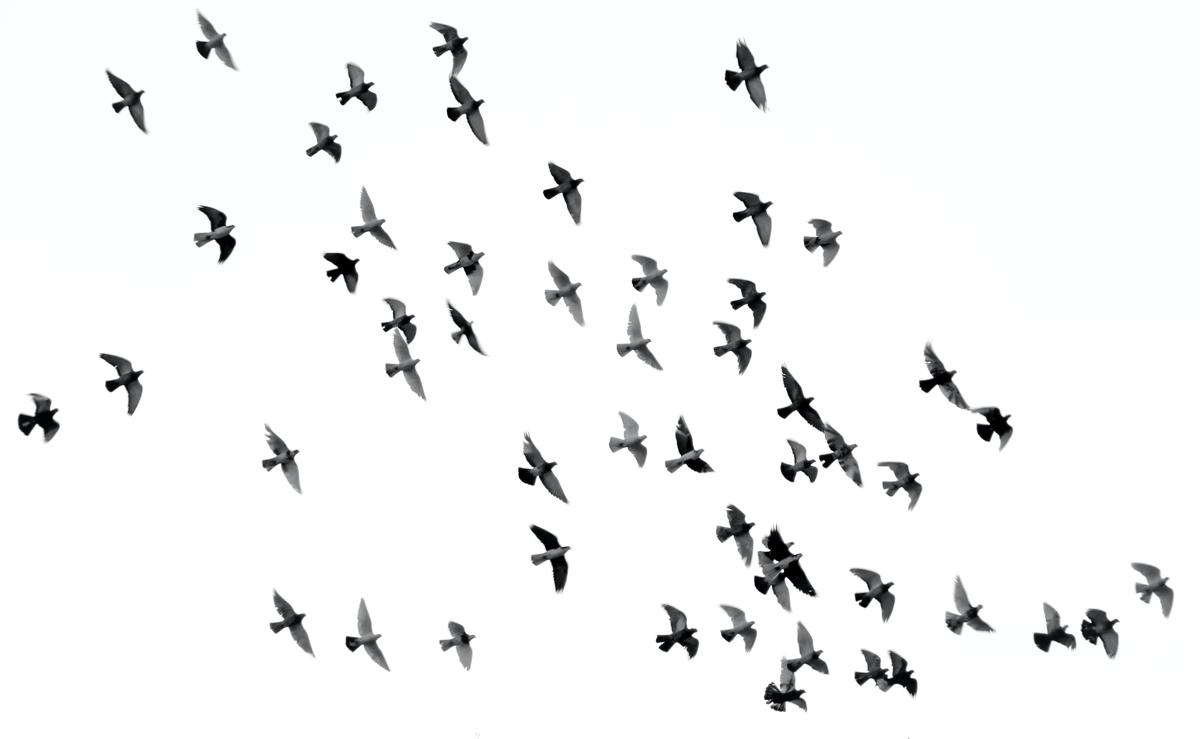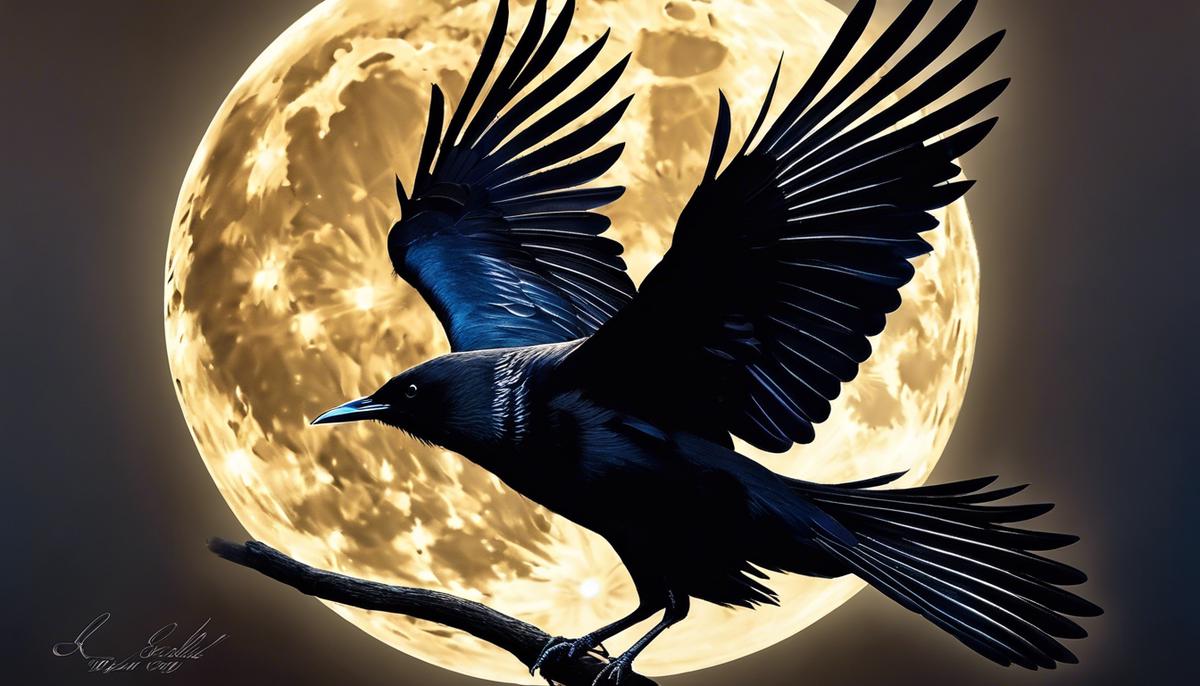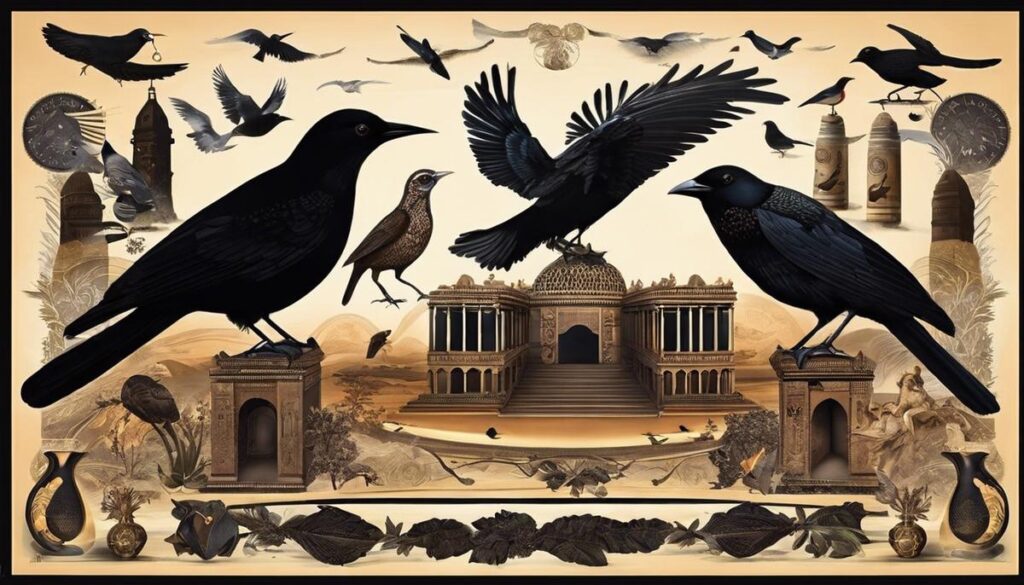For centuries, dreams have been a subject of considerable intrigue, embodying a mystifying world that manifests our deepest fears, desires, and mysteries. Among the most mesmerizing symbols are black birds, whose appearances in dreams have elicited various interpretations across different cultures, religions, and psychological concepts. This discourse seeks to dig deeper into the layers of symbolism accompanying these feathered creatures, retrospectively looming through historical and cultural lenses, psychological perspectives, and their portrayals in literature and art. At its core, the exploration aims to delve into real-life implications, pinning down how these interpretations can be beneficially applicable in our waking lives.
Historical and Cultural Interpretations
Black birds, these creatures of the sky have been captivating human imagination for centuries, inviting a multitude of interpretations in dreams across various cultures. They strike a profound chord within the human psyche, transcending borders and time, and are deeply interwoven with myths, folklore, and spiritual beliefs that vary extensively from one culture to another.
In Western societies, where symbolic language tends to carry a certain weight, black birds, due to their dark hue, oftentimes are associated with the unknown, the mysterious, and sometimes even foreboding elements. This association is particularly poignant in dreams where they often symbolize subconscious fears or anxieties. In Christianity, for instance, black birds such as crows and ravens can be linked to sin or the devil, yet are also considered harbingers of divine providence in other interpretations.
On the other side of the spectrum, Eastern cultures hold different perspectives. For example, in the Chinese culture, the blackbird is not necessarily viewed as ominous, but as a sign of transformation. Specifically, it is associated with the yin aspect of yin-yang philosophy, representative of the passive or receiving principle in nature. In dreams, blackbirds might indicate an upcoming change or transition in the dreamer’s life.
Indigenous cultures also hold unique interpretations of black birds in dreams. To the Native American tribes, blackbirds like crows and ravens are not seen as objects of fear or sign of impending doom. Instead, they are considered omens of change, bearers of magical abilities and symbolic of creation and spiritual strength. Dreaming of black birds in these cultures might be an invitation to delve deeper into one’s spiritual path or a signal of a potential personal transformation.
Meanwhile, in Celtic mythology, black birds, particularly the ravens, hold a place of high honor. They are revered as messengers from the otherworld, carrying profound wisdom and knowledge. Dreaming of them could be seen as a significant element indicating an upcoming enlightenment or an important message.
In essence, the interpretation of black birds in dreams is not monolithic. It’s a diverse and complex field shaped by the rich tapestry of human understanding and cultural diversity. Whether as an omen, an indicator of change, or a messenger from other realms, these interpretations offer valuable glimpses into the broad spectrum of human symbolism and cultural diversity, reminding us of the profound connections between our waking lives, our dreams, and the natural world around us. With every dream comes a new possibility of interpretation, a deeper understanding of our human psyche, and a further glimpse into the ancient wisdom that binds us all.

Psychological Perspectives
Examining Contemporary Psychological Theories: Dreaming of Black Birds
In a pivoting departure from cultural interpretations of black birds in dreams, which are as diverse as they are fascinating, contemporary psychoanalytical theories suggest that these avian creatures may represent more than just symbolic manifestations or cultural signifiers. In the realm of psychology, they provide unique insights into an individual’s deep-seated personas and cognitive processes.
One of the leading theories within this discipline, hailing from researcher Carl Jung, offers intriguing possibilities. Jungian theory postulates that dreaming about black birds might suggest the dreamer’s confrontation with the ‘Shadow Self.’ This concept, presented by Jung, signifies an aspect of one’s identity that remains hidden in the unconscious, comprises undesirable characteristics, and is suppressed due to societal or personal constraints.
Observing a black bird in dreams, according to this theory, might signify surfacing of this ‘Shadow Self,’ thus instigating a process of self-discovery or growth. Herein, it’s worth noting the transformative connotations associated with black birds in Chinese culture, a symbol whose essence the Jungian concept, albeit unwittingly, seems to echo.
From the prism of Gestalt psychology, images in dreams, including black birds, are considered a vital part of the mind’s dialogue with itself. Advocates of this theory, like Fritz Perls, believe that every element of a dream is an extension of the dreamer’s consciousness and experiences. Consequently, black birds could symbolize any array of subjects pertinent to the dreamer’s life – past experiences, individual fears, future aspirations, or emotional upheavals. The interpretation, thus, would be profoundly personal and subjective.
In contrast, cognitive theories of dreaming propose that dreams are the brain’s method of rearranging, processing, and archiving experiences and information gained during wakeful hours. This school of thought asserts that dreaming about black birds, or any specific imaginal content, is essentially tied to an individual’s daily life experiences. Therefore, the influence of black birds in one’s waking life, such as past encounters, media representations, stories, or anecdotes, can inevitably influence their nocturnal dreamscapes.
In conclusion, contemporary psychological theories tend to distance themselves from universal symbolic interpretations of black birds in dreams. Instead, they are inclined towards personal introspection, unconscious reflections, or cognitive information processing. However, the interconnectedness between psychological interpretations and cultural symbols invariably reiterates the complex, dynamic nature of dreamland’s enigmatic residents, such as the black birds, and their varied significance spanning across time, societies, and individual psyches.

Photo by imandrewpons on Unsplash
Depictions in Literature and Art
Deepening our understanding of black birds in dream imagery requires meticulous exploration of various vantages of psychology itself.
Esteemed theorist Carl Jung’s concept of the Shadow Self in the sphere of analytical psychology might broadly hint at answers to this intriguing symbolism. In his extensive research on human psyche and dream analysis, he famously introduced the Shadow Self, an often overlooked aspect of human consciousness comprising unchartered territories of feelings, desires and impulses. When a black bird, symbolic of shadowy depths, manifests in dreams, it may indicate a pressing need for self-awareness and confrontation of these hidden realms of the psyche.
Moving towards the Eastern realms of symbolism, dreams of black birds are perceived through a transformative lens in Chinese cultural thought.
Held in high esteem, these enigmatic avian creatures symbolize the mercurial aspects of natural order, closely akin to the human psyche’s transformative process. Dreaming of them could possibly be an intuitive foresight of imminent transformation or transition.
Gestalt psychology
delves into the human mind’s inherent capacity to form a meaningful whole from individual elements. From this perspective, if the dreamer encounters a black bird, it suggests the subjective synthesis of the object’s many possible meanings influenced by the dreamer’s unique experiences and mental schemata. Therefore, deciphering the black bird’s symbolism becomes a highly personalized endeavor, open to multifarious interpretations.
Cognitive theories of dreaming
further hone our understanding of black bird symbology. Emerging from this school of thought is the notion that dreams, inclusive of our raven visitors, are not cloaked messages for us to decipher but merely our minds’ way of sifting through, categorizing and comprehending daily experiences during the REM-sleep phase. Hence, if black birds play a recurrent role in your slumber’s script, it might merely be influenced by your daytime encounters, conversations, or musings about these birds.
These nuanced theories mark a notable departure from conventional symbolic interpretations. While traditional dream analysis clung to universally standardized interpretations, such as association of black birds with doom or change, contemporary theories spotlight the dreamer as the vital determiner of their dream’s true import.
Evidently, the mark of human culture and psychology on dream symbolism is dynamic and kaleidoscopic. Drenched in mystery, black birds in dreams continue to be rich subjects for exploration across literature, art, and the ever-evolving field of dream analysis. They stand as compelling reminders of the fertile interplay between the collective unconscious and an individual’s personal experience, in shaping our understanding of this profound aspect of cognition. Through their recurring appearances across cultures and eras, black birds perhaps invite us on a journey, an introspective quest to uncover latent personal and cultural dimensions of the human psyche.

Photo by mehdisepehri on Unsplash
Real Life Implications and Application
Understanding the symbolism of black birds in dreams opens a riveting realm of psychological and cultural interpretations, influencing the way we comprehend our subconscious mind. A standout perspective comes from the eminent psychologist Carl Jung, who asserted that dreaming of a black bird might embody our Shadow Self – a facet encapsulating unexplored or denied aspects of the individual. This theoretical concept addresses the fact that human psyche might house thoughts, emotions, and desires disassociated from conscious ideation. A black bird, in this context, may signify suppressed anxieties, fears, or uncertainties requiring attention and introspection. Therefore, decoding such dream symbolism can spark a journey of self-awareness, enabling confrontation and reconciliation with the hidden recesses of the mind.
Transitioning geographically and philosophically, Chinese culture perceives the black bird as the harbinger of transformation. This perception indicates a divergence from fearful Western interpretations and encapsulates a more positive and dynamic understanding. Recognizing such cultural differences in symbolism helps widen global perspective beyond the realm of Western psychology.
Meanwhile, Gestalt psychology, a school of thought distinct from Jungian analysis, offers a more personal interpretation, asserting that dream symbols are subjective amalgamations formed by one’s experiences, beliefs, and mental constructs. Consequently, a black bird might have variant significance for different individuals, demanding a more personal and subjective approach to dream analysis.
Cognitive theories contribute an additional perspective, suggesting that dreams, including those about black birds, are the mind’s way of processing and categorizing daily experiences. Hence, an encounter with a black bird or related symbol during the waking hours might manifest in dreams, and not necessarily carry profound symbolism.
These cognitive theories enforce a conscious shift from classical symbolic interpretations towards a more contemporary understanding. As such, the significance of a black bird in dreams could rely less on global symbolism and more on individual daytime experiences and cognitive processes.
Such dynamism enriches the conceptual landscape of dream interpretation, asserting its complexity and multidimensionality. The symbolism of the black bird underpins diverse cultural narratives, psychological schools of thought, and intense introspection.
Documented across cultures and eras, the recurring presence of the black bird in dream lore and symbolism underscores the bird’s consulate importance. Consideration of these multifaceted interpretations can motivate introspective investigation, encouraging exploration of the intertwined constituents of the personal and the cultural within the wider ambit of the human psyche. This exploration can steer us closer to self-awareness, an understanding of our cultural schema, and possibly, a better understanding of what it means to dream of black birds.
In conclusion, unveiling the intricacies of the black bird’s symbolism in dreams transcends fascination for the metaphysical. It connects to broader patterns of cultural symbolism, multifarious psychological theories, and personal introspection & exploration embedded within our collective unconscious. Ultimately, it confronts us with a more profound quest into the labyrinth of our minds, inviting us to confront and comprehend our anxieties, fears, and transformative capabilities.

Through a thoughtful exploration of historical, cultural, psychological, and societal portrayals, we gain a more profound understanding of the symbolism carried by black birds in our dreams. With this knowledge, we are equipped to harness the power of our subconscious mind and its dream messages, thus fostering awareness, personal growth, and recognition of potential warning signs. Similarly, literature and art fans stand to gain a deeper insight into the symbolic use of these creatures in various works. Ultimately, the interpretation of black birds in dreams blurs the line between the physical and the ethereal realm, opening the avenue for self-discovery, transformation, and a greater understanding of the human psyche.








